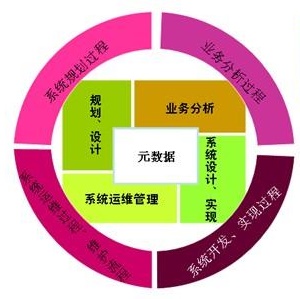Poverty maps are essential tools for governments and NGOs to track socioeconomic changes and adequately allocate infrastructure and services in places in need. Sensor and online crowd-sourced data combined with machine learning methods have provided a recent breakthrough in poverty map inference. However, these methods do not capture local wealth fluctuations, and are not optimized to produce accountable results that guarantee accurate predictions to all sub-populations. Here, we propose a pipeline of machine learning models to infer the mean and standard deviation of wealth across multiple geographically clustered populated places, and illustrate their performance in Sierra Leone and Uganda. These models leverage seven independent and freely available feature sources based on satellite images, and metadata collected via online crowd-sourcing and social media. Our models show that combined metadata features are the best predictors of wealth in rural areas, outperforming image-based models, which are the best for predicting the highest wealth quintiles. Our results recover the local mean and variation of wealth, and correctly capture the positive yet non-monotonous correlation between them. We further demonstrate the capabilities and limitations of model transfer across countries and the effects of data recency and other biases. Our methodology provides open tools to build towards more transparent and interpretable models to help governments and NGOs to make informed decisions based on data availability, urbanization level, and poverty thresholds.
翻译:贫困地图是政府和非政府组织追踪社会经济变化并在有需要的地方充分分配基础设施和服务的基本工具。传感器和在线众包数据与机器学习方法相结合,在贫困地图推断方面提供了最近的突破。然而,这些方法并未捕捉到当地财富波动,并且没有优化为产生可承担结果以确保对所有子人口的准确预测。在这里,我们提出了一系列机器学习模型来推出多个地理聚类人口地点的财富平均值和标准差,并展示了它们在塞拉利昂和乌干达的表现。这些模型利用七个基于卫星图像的独立和免费的特征源以及通过在线众包和社交媒体收集的元数据。我们的模型表明,结合元数据特征是农村地区财富的最佳预测器,在预测最高财富五分位数方面,基于图像的模型是最好的。我们的结果恢复了财富的当地平均值和变化,并且正确捕捉了它们之间的正但非单调相关关系。我们进一步展示了跨国家的模型转移能力和数据新旧以及其他偏见的影响。我们的方法提供了开放的工具,构建透明和可解释的模型,帮助政府和非政府组织根据数据可用性、城市化水平和贫困阈值做出明智决策。



